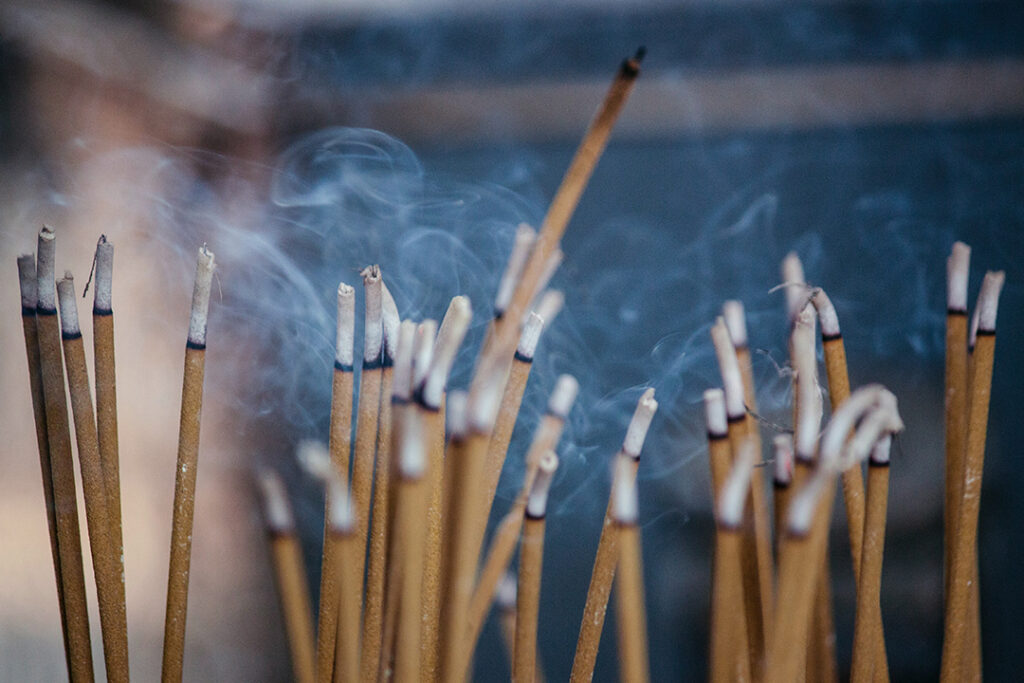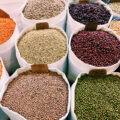Odours of sanctity: The use of incense in religious settings
Odours of sanctity: The use of incense in religious settings
The sights and sounds of Ramadan, Passover, and Easter are often explored: but what about the smells? The role of religious incense deserves exploration.
Religious ceremonies and places of gathering often stimulate the senses. Churches can be adorned with lavish artwork, awash in chanting or sung psalms. Similarly, Muslims are called to calligraphy-filled mosques by muezzins who melodiously chant the adhan.[1] And singing plays a key role in education and in marking rites of passage in the Jewish tradition.[2]
Yet another sense, often overlooked, unites each of these places of worship: that of scent. This article briefly explores how the three Abrahamic faiths employ scent: historically and today.
Jewish use of scent – from biblical plague to coronavirus
In the Jewish tradition, the practice of using incense at synagogue can be traced to the ketoret offering. This offering, traced by some to a story of Moses and Aaron in the Torah, took place twice a day in the Jewish Temple.[3] There are numerous references to the practice and spices in the Torah.[4]
Traditionally, 11 spices were combined to form the ketoret. Four are listed in the Torah – balsam oil, storax, frankincense, and onycha. The others are somewhat debated, but likely include saffron, cinnamon, and agarwood, amongst others.[5]
The importance and role of ketoret garnered newfound focus during the early phases of the COVID-19 pandemic, particularly in Italy. During the biblical exodus from Egypt, several Israelites were struck by the plague. Moses instructs Aaron to expose the afflicted to incense, which heals many. Alluding to this story, the Rabbinic Assembly of Italy composed a coronavirus prayer in March 2020 that centred around the ketoret.[6]
Christian use of scent – frankincense, myrrh, and others as religious incense
As celebrations for Easter grip much of the Christian world, the scent of burning incense will fill the nostrils of many churchgoers. Influenced by the earlier Jewish tradition, many scents are burned in the traditional Christian censers, including styrax, copal, benzoin, and frankincense.
Several of these, including frankincense, most famously connected with the story of the Three Kings who visit the baby Jesus bearing gifts of gold, frankincense, and myrrh (another aroma, though used more in perfume), are types of tree sap.[7] Beyond being regularly burned at the Eucharist, traditional Paschal candles often have components of these scents incorporated into them.[8]
Odour of sanctity
On a related, albeit different note, the Christian tradition also included osmogenesia – or the ‘odour of sanctity’. This is an ethereal scent described as emanating from the body of saints and symbolising their holiness. These saints would often be called ‘myroblytes’. The word derives from the same root from which we get ‘myrrh’.[9]
Islamic use of scent – agarwood/oud as religious incense
In Islam, one of the most important scents is another resin-based one: agarwood, or oud.[10] Considered by some to have become the most expensive wood in the world, oud is renowned for its unique, warm woody scent.[11]
While used both in private homes and mosques, the expensive scent can be found in abundance around the Kaaba, one of the Muslim world’s holiest sites. In fact, the Grand Mosque and Kaaba are reportedly perfumed up to ten times a day with oud.[12]
Arguably, the importance of scent can spill out of the mosque, too. Scent, particularly as perfume, has played an important role in Islamic history.[13] In fact, a 2017 study at the Arab American University detailed how the use of perfume is ingrained in the Islamic faith.[14] The study outlines how Muslims, including the Prophet Muhammad, historically used perfumes.
While the Koran never mentions agarwood or oud specifically, it does arise in the hadith, with depictions of heaven as a place where oud is burned.[15] [16] Perhaps, unsurprisingly then, some evidence has shown that the average Saudi , most of whom are Muslim, wears 8 times as much perfume each year than an average European.[17]
Climate change fears
Similarly uniting these unique and uplifting smells is their increasing scarcity. Many of the trees important for producing the resin needed for these unique smells are particularly vulnerable to global climate change, conflict, and the broader loss of terrain to other farming and development.[18] [19]
Overall, these spice and resin-rich scents transcend not only different houses of worship but also time. This rich history advises, therefore, that the next time we attend such a ceremony – whether out of conviction or secular interest – that we pay attention not only to the sights and sounds but also the smells of sanctity.
You can use the free EARS Dashboard to learn more about trends and developments on the topic of religion and society. Hundreds of article summaries from all over the world were added in the past months!
Sources
[1] The art of the adhan: The multiple melodies of the Muslim call to prayer
[2] The Importance of Singing in the Jewish Tradition – Hervé Roten
[3] Why Ketoret Incense in the Temple?
[4] For instance, Exodus 30:34.
[5] Why Ketoret Incense in the Temple?
[6] Incensed by Coronavirus: Prayer and Ketoret in Times of Epidemic
[7] There’s More to Frankincense and Myrrh than Meets the Eye
[8] Everything you need to know about the Easter candle
[9] What is the odor of holiness?
[11] Where, When, Why: Oud Fragrance
[12] Kaaba and Grand Mosque fragranced 10 times a day
[13] Actually, the Birthplace of Modern Fragrance Is the Middle East
[14] The Prophet’s Method of Using Perfume
[15] The Scented History of Oudh Perfume
[16] Hadith: Sahih al-Bukhari 3327 Book 60, Hadith 2
[17] Saudis wear 8 times more perfume than Europeans
[18] Incense in Doubt as loss of Boswellia trees leads to global shortage of frankincense
[19] Habitat suitability model of Agarwood in a changing climate






